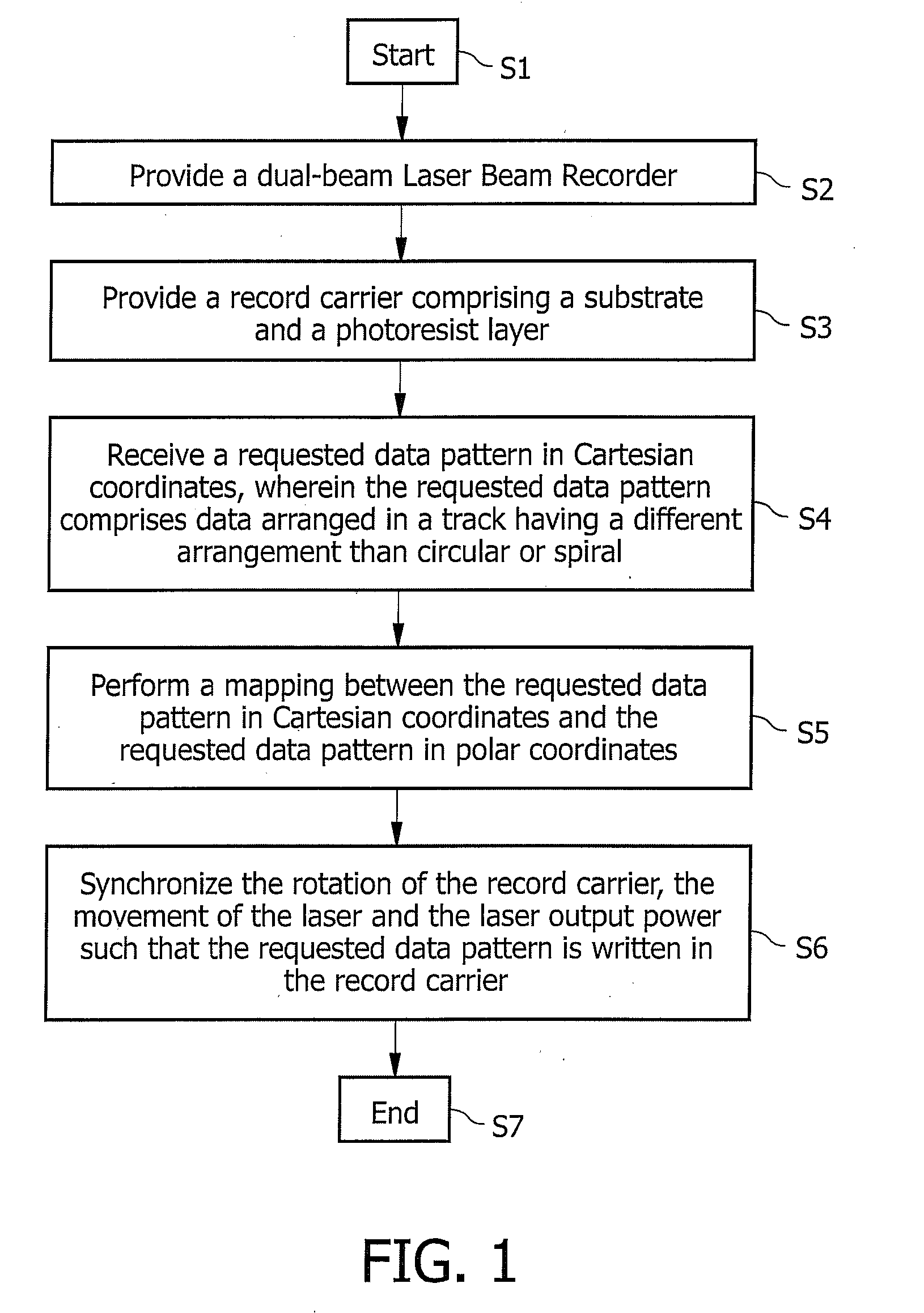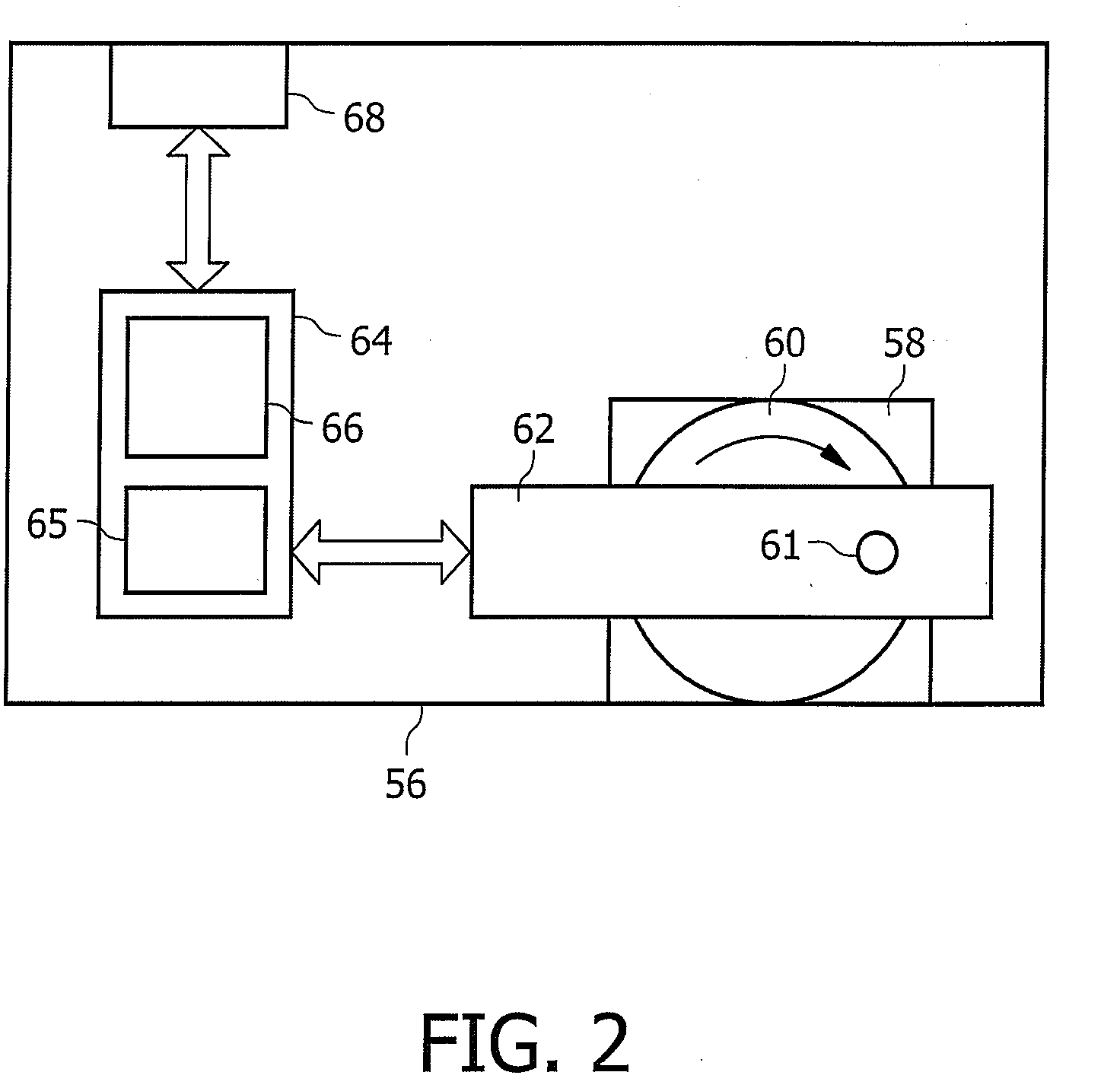Dual-beam laser beam recorder, and method for controlling a dual-beam laser recorder
- Summary
- Abstract
- Description
- Claims
- Application Information
AI Technical Summary
Benefits of technology
Problems solved by technology
Method used
Image
Examples
Embodiment Construction
[0054]FIG. 1 is a flow chart illustrating an embodiment of the method in accordance with the invention. The illustrated method starts in step S1. In step S2 a dual-beam Laser Beam Recorder is provided which will be described in greater detail with reference to FIG. 2. In step S3 a record carrier comprising a substrate and a recording stack is provided. For conventional mastering, the recording stack comprises a photoresist layer. It should be clear that optionally other layers may also be provided, for example layers to improve the absorption of the laser light and to improve the pit shape. It is also possible to use a master substrate based on phase-transition materials. Furthermore, it should be clear that in cases where pits comprising different depths are to be created, record carriers comprising a corresponding number of recording layers may be used. In step S4 a requested data pattern is received in Cartesian coordinates. The requested data pattern comprises data arranged in a...
PUM
 Login to View More
Login to View More Abstract
Description
Claims
Application Information
 Login to View More
Login to View More - R&D
- Intellectual Property
- Life Sciences
- Materials
- Tech Scout
- Unparalleled Data Quality
- Higher Quality Content
- 60% Fewer Hallucinations
Browse by: Latest US Patents, China's latest patents, Technical Efficacy Thesaurus, Application Domain, Technology Topic, Popular Technical Reports.
© 2025 PatSnap. All rights reserved.Legal|Privacy policy|Modern Slavery Act Transparency Statement|Sitemap|About US| Contact US: help@patsnap.com



